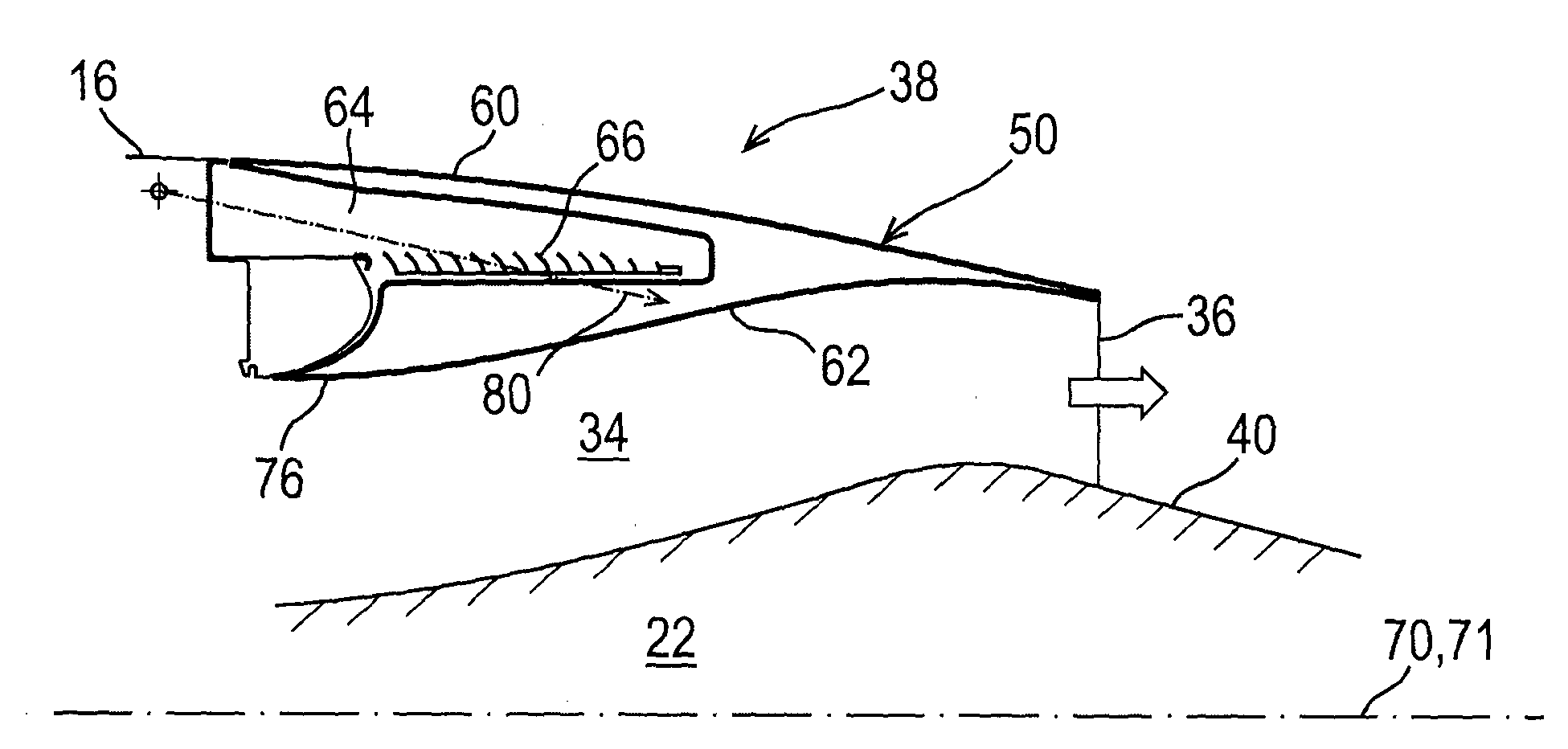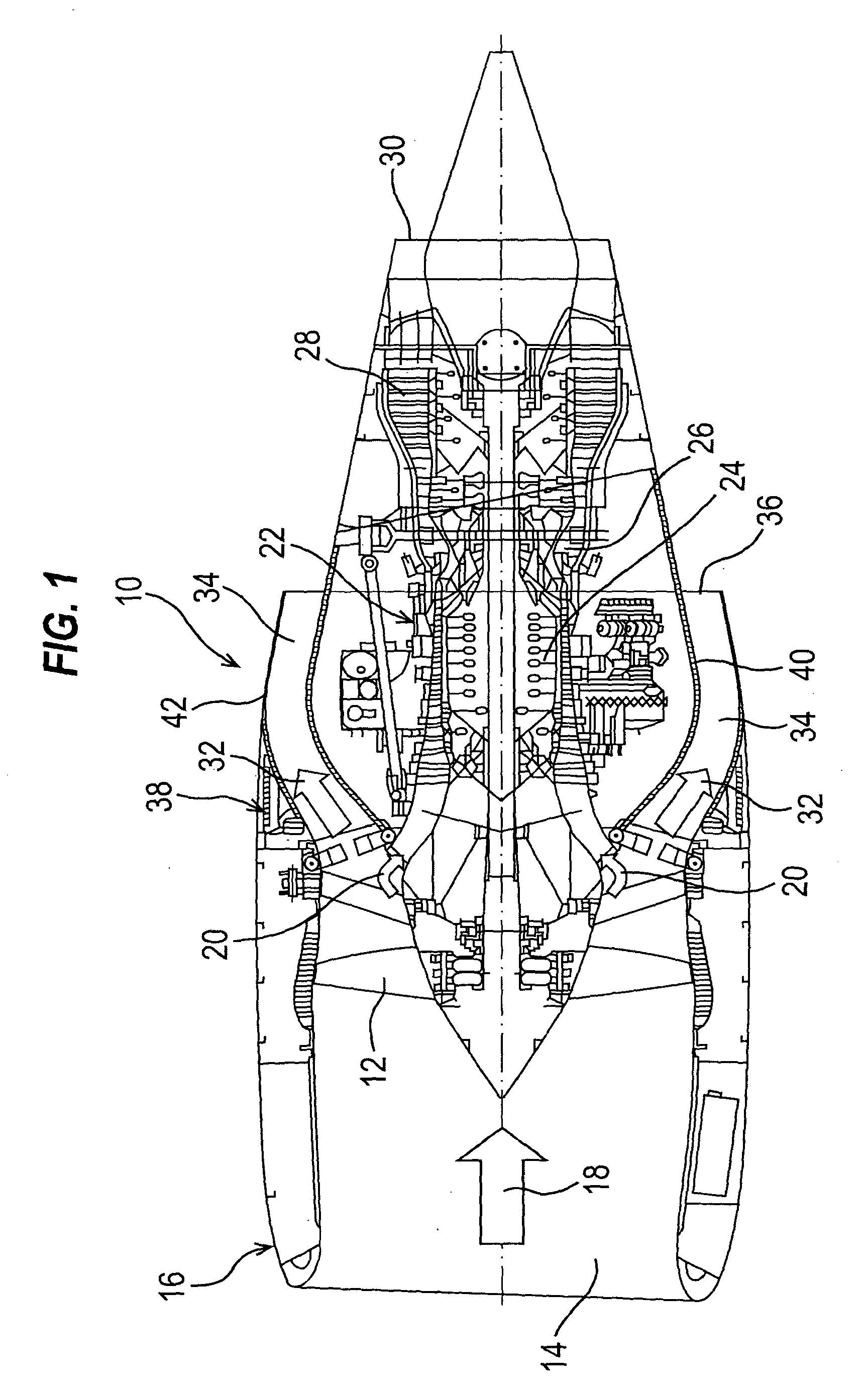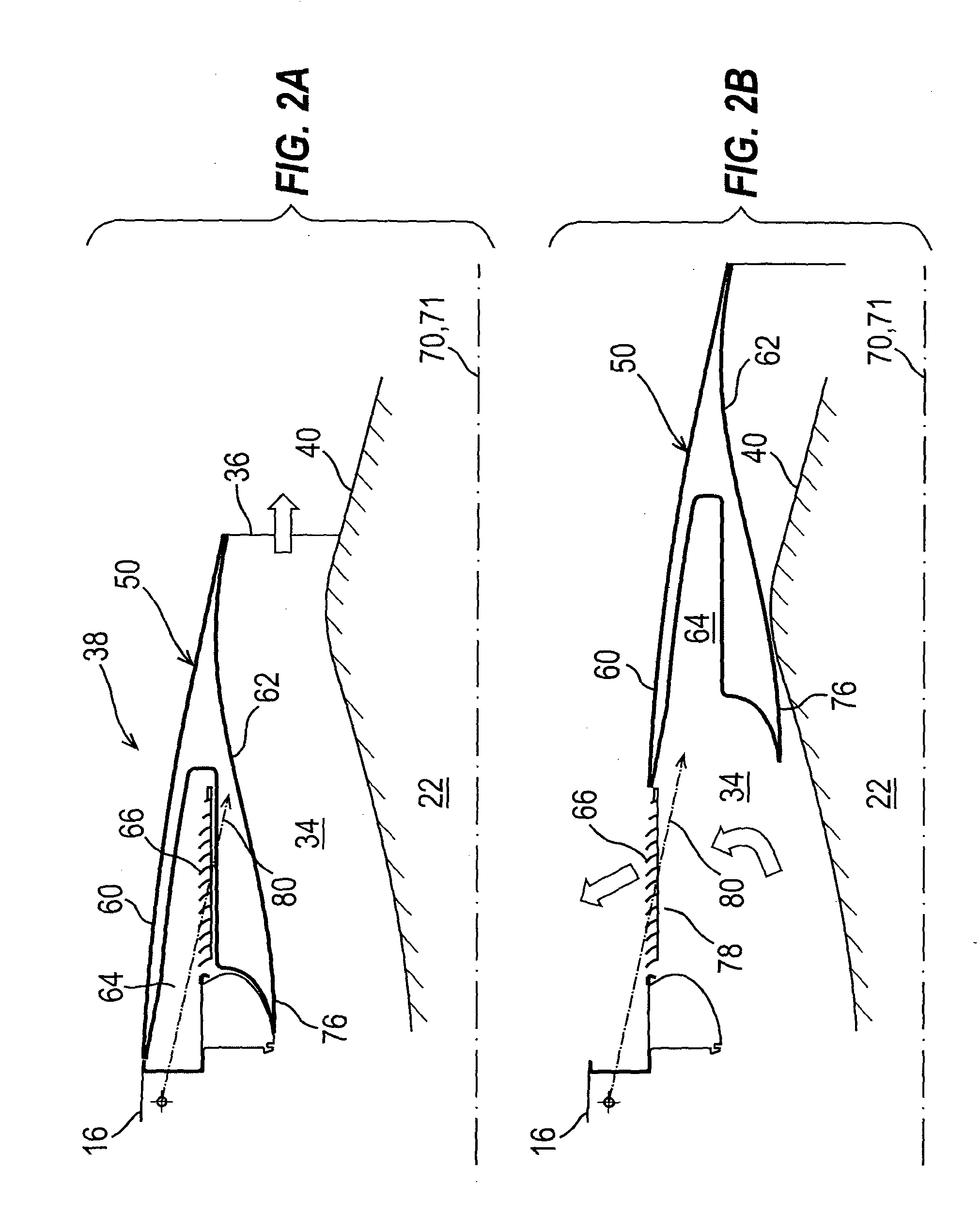Aircraft engine thrust reverser
a thrust reverser and aircraft engine technology, applied in the field of thrust reverser structure, can solve the problems of increasing weight, reducing the service life of the articulating activating linkage, increasing the cost, etc., and achieves the effects of reducing the deployment stroke, and saving weigh
- Summary
- Abstract
- Description
- Claims
- Application Information
AI Technical Summary
Benefits of technology
Problems solved by technology
Method used
Image
Examples
first embodiment
[0030]FIGS. 2A and 2B show a schematic cross section through a thrust reverser arrangement 38 according to the present invention; FIG. 2A being in the stowed (i.e. inoperative position) and 2B being in the deployed (i.e. operative position). Only the essential features of the invention are shown for the sake of clarity, and furthermore, only one side of the engine at a position circumferentially intermediate the location of slider rails on which the translating cowl portions (both of which to be described below) are mounted. FIGS. 2A and 2B are perhaps best viewed together with FIGS. 3A, 3B and FIG. 4 which show the thrust reverser arrangement of the present invention in the context of a whole engine 10 and a mounting pylon therefor.
[0031]The thrust reverser arrangement of the present invention comprises an inner by-pass fan duct cowling 40 surrounding the engine core 22 and an outer, translatable by-pass fan duct cowling portion 50. There is a matching by-pass fan duct cowling port...
third embodiment
[0036]the present invention is shown with reference to FIGS. 6A and 6B; 6A showing the thrust reverser arrangement in the stowed position and 6B in the deployed position. The basic structure of the reverse thrust arrangement in this embodiment is essentially the same as that described with reference to FIG. 2. However, in this embodiment, the reverse air flow assisting cascades 66 are replaced by a slot 100 arrangement defined by slats 102. The shape of the cavity 64 is so formed as to generate suitable flow and back pressure characteristics to assist air flow out of the second gaseous fluid exit opening 78, the slats 102 assisting the air flow to adhere to a nose portion 106 of the fixed cowl 16 to prevent flow separation and maximise reverse thrust air flow 108. The principles relating to control of air flow in this embodiment are fully described in EP-A-1 515 035 of common ownership herewith.
[0037]A fourth embodiment of the present invention is shown with reference to FIG. 7. In ...
PUM
 Login to View More
Login to View More Abstract
Description
Claims
Application Information
 Login to View More
Login to View More - R&D
- Intellectual Property
- Life Sciences
- Materials
- Tech Scout
- Unparalleled Data Quality
- Higher Quality Content
- 60% Fewer Hallucinations
Browse by: Latest US Patents, China's latest patents, Technical Efficacy Thesaurus, Application Domain, Technology Topic, Popular Technical Reports.
© 2025 PatSnap. All rights reserved.Legal|Privacy policy|Modern Slavery Act Transparency Statement|Sitemap|About US| Contact US: help@patsnap.com



